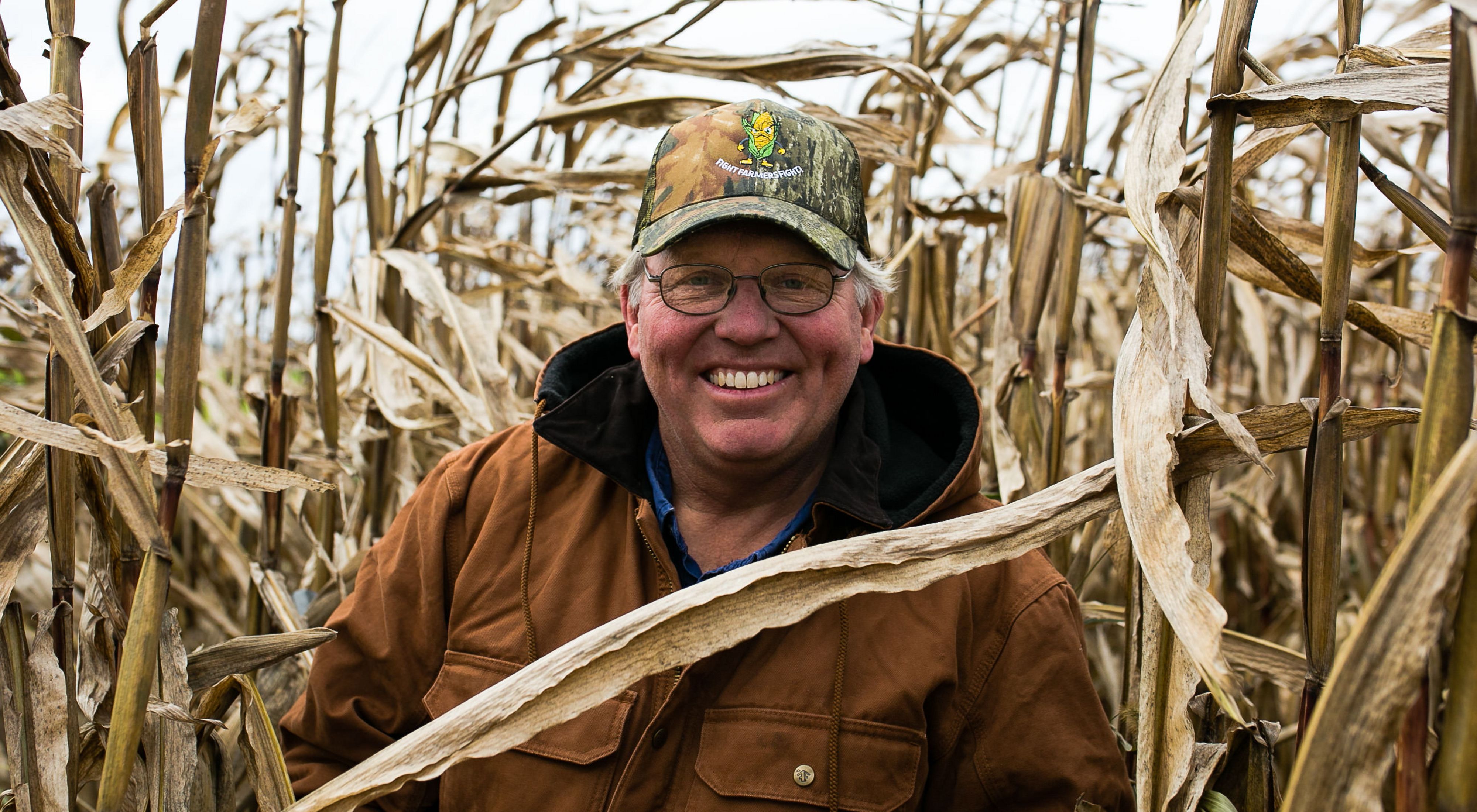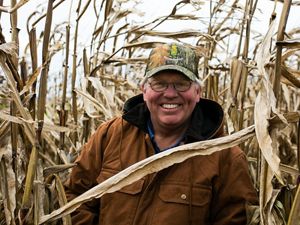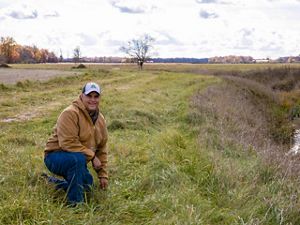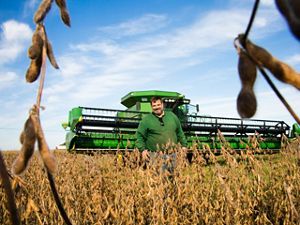Farmers at the Forefront of Soil Health
See how other farmers are building a sustainable future on their lands.
See Their StoriesMike Werling, a fifth-generation farmer, is thrilled that his “farming ugly” practices of no-till and cover crops are enriching his Indiana yellow-clay soils, turning them darker and prairie-like. He delights in watching earthworms forage at night on his farm and says he typically finds half a dozen in a shovel scoop.
“Soil health is my number one thing right now,” says Werling. “How do I keep increasing my organic matter, and get my earthworms and my roots, to go deeper into my soil?”
Werling began in the late 1980s to implement conservation practices on his 350-acre farm, where he grows corn, oats for seed, wheat and soybeans. Starting first with no-till (planting without plowing first) and the 4Rs of nutrient stewardship—a science-based approach to apply the right source of fertilizer at the right rate and the right time in the right place—he later introduced cover crops. Today he uses minimal pesticides and cultivates a pollinator garden on highly erodible land to support honey bees and other pollinators that are critical to plant reproduction and genetic diversity. He also employs drainage control systems to reduce runoff of nutrients like nitrogen and phosphorus.
Quote: Mike Werling
Soil health is my number one thing right now. How do I keep increasing my organic matter, and get my earthworms, my roots, to go deeper into my soil?”
Multiple Benefits from Conservation Practices
Among the many benefits Werling sees from these conservation practices, “super-charged” soil health, increased yields, lower inputs and overhead, and reduced soil erosion top the list.
Soil erosion is why he started no-tilling in the first place. “I hated to see erosion all my years [growing up on the farm],” says Werling. Labor was another key consideration as no-till is less labor intensive.
Beginning with wheat and soybeans and adding corn in 1994 when he got a no-till planter, Werling taught himself how to no-till. Serendipity got him started with cover crops, which are noncash crops planted to enrich the soil and protect it from erosion. One spring he noted that a field with “volunteer” oats (that is, oats that had not been deliberately planted) from the previous year’s rotation before corn produced the “easiest and best” no-till corn. That convinced him to plant oats into his wheat stubble in the summertime in the fields where he would grow corn the following year.
Over time he added cover crops of daikon radish, crimson clover and Austrian winter peas. Today he uses a cover crop seed mix that includes warm season grasses and broad leaves, planting in August on fields that go from wheat or oats to corn.
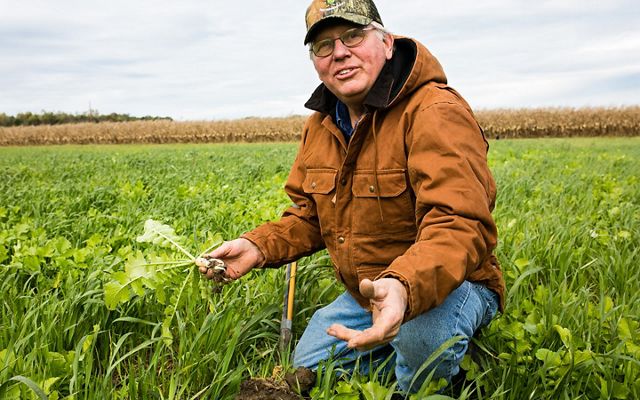
Enriching the Soil with Cover Crops
Cover crops are enriching his soil with organic matter and allowing this crops’ roots to penetrate the soil more deeply. That’s enabled him to reduce his fertilizer use.
“The deeper I can get my roots in, the more I am farming,” he says. “The deeper I can get that carbon to go, the more my soils mineralize the nutrients, the more they give me that I don’t have to put the nutrients onto it.”
An early adopter of the 4Rs, Werling received an award for responsible nutrient management at the 2016 National No-tillage Conference. He also collaborated with The Nature Conservancy and other partners on the creation of the 4R Nutrient Stewardship Certification Program for the Western Lake Erie Basin.
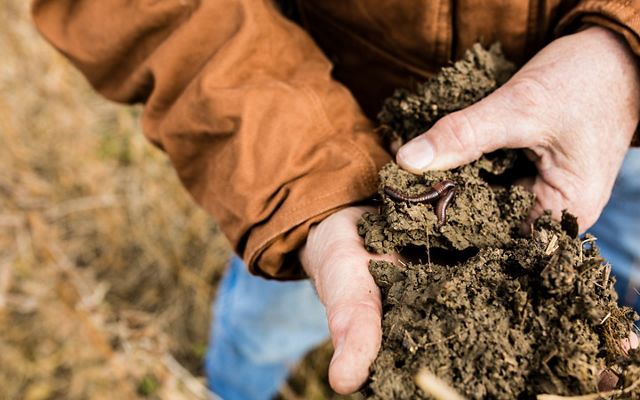
Keeping Nutrients on the Fields
Looking for more effective use of nutrients drove him to begin applying fertilizer at planting time, on the seed or right beside it, rather than spreading it widely on to the field. He keeps his nutrient levels so low, he says, there’s little that can leach from his land. All the same, he’s installed drainage control systems to reduce nutrient runoff from his fields, including a series of gates that can be opened and closed to control water flow and 120 foot-wide filter strips (grassy strips at the edge of fields) on his farm that capture sediment and nutrients during heavy rainfall events.
As a result of these conservation practices, Werling says, “My yields are steadily increasing just like the national averages are, but I’m not at the high end of yields. I’m at my optimum returns per acre.” In other words, Werling isn’t focused on pushing his yields as high as they’ll go by increasing his fertilizer inputs. Instead, he’s found a sweet spot of the best economic yield using the least amount of inputs necessary, along with strong conservation practices.
Those results gratify Werling. His farm’s motto is, “For healthier soil and cleaner water, cover crop your assets and till no more.”
“I’m proud,” says Werling, “to continue what my great-great grandfather started, to hopefully keep it going, and to be making the soil better than the way I received it.”
